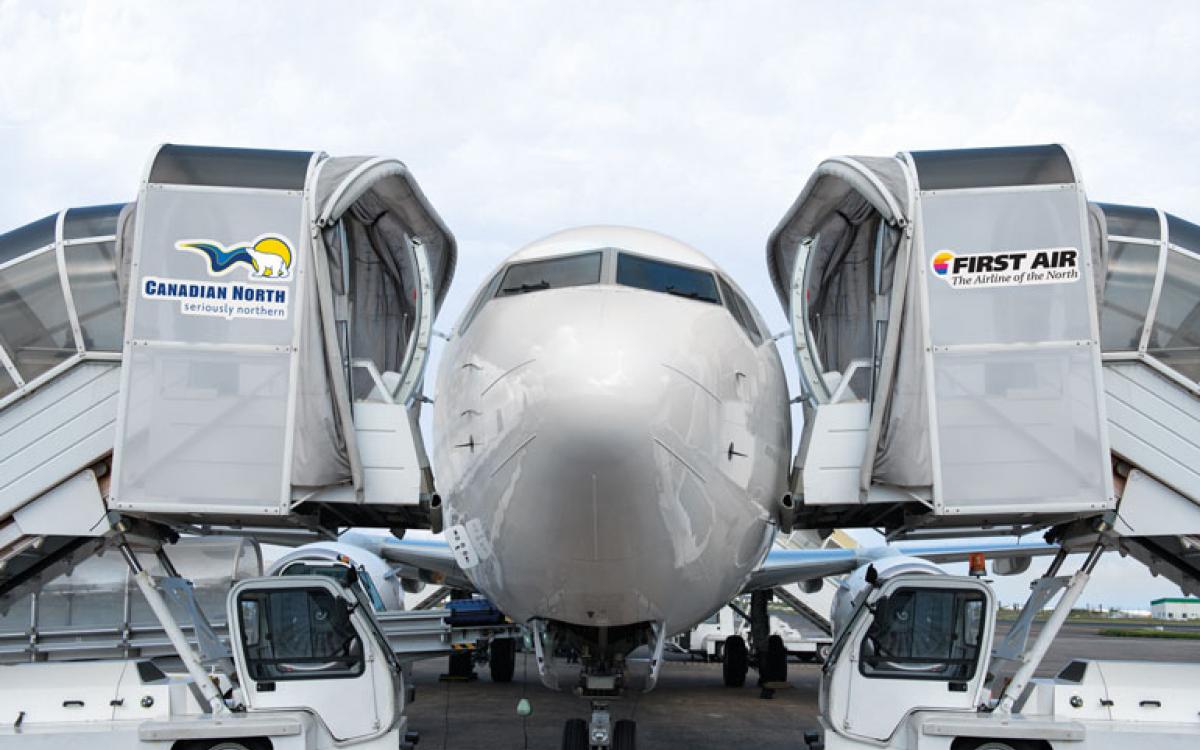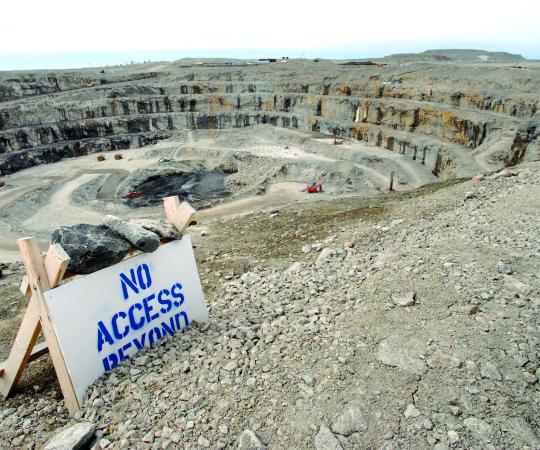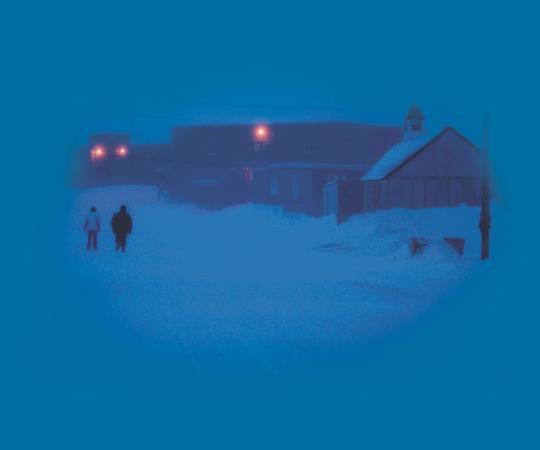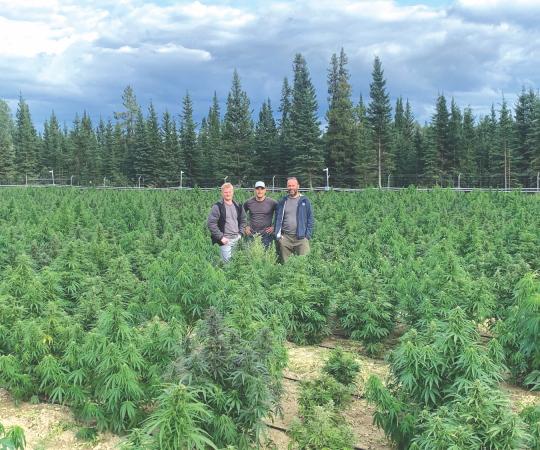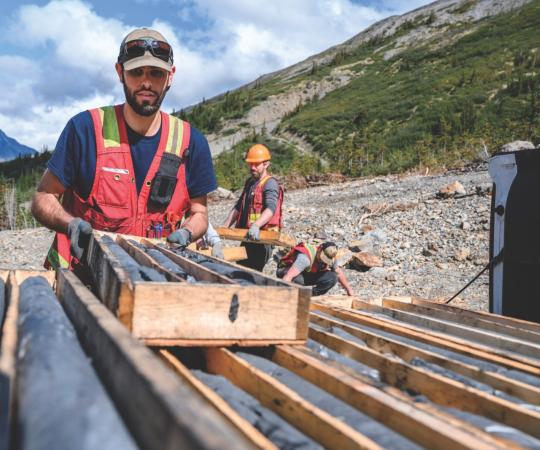It’s not a merger, but a codeshare agreement is the next best thing Canadian North and First Air could do to shake up the status quo. And what exactly is the status quo? Two big Northern airlines flying into the same communities, at the same time, with both flights largely empty.
With the North’s small passenger markets, long distances, challenging weather and high-cost infrastructure, something had to give. “If you don’t change, in a lot of cases, you do die and that’s the reality of the industry we’re in,” says Peter McCart, Canadian North’s senior vice-president of scheduled services.
After merger talks broke down late last year, the two rivals announced a codeshare agreement in May that will essentially consolidate money-losing flights operated in direct competition with each other—what they call flying “wingtip to wingtip.” Scheduled to come into effect July 27, the agreement will also see the airlines add new flights, offering more connection options for customers.
But it’s still a bit confusing. Will you buy a Canadian North ticket, but wind up on a First Air flight? And who gets that money? Will they collaborate on pricing? Is this agreement permanent? And what’s the deal with First Air’s other codeshare agreement, with Calm Air, which became operational July 2?
We spoke to executives with all three companies to answer some of the questions you might have about this deal.
If you look at that, we’ve taken out the cost of one operation and they’ve taken out the cost of two operations, but no passenger is going to lose their seat because most of the flights were empty anyway."
What is a codeshare?
Think Air Canada and its Star Alliance network. You buy a ticket through Air Canada, but it doesn’t necessarily mean you’ll fly on an Air Canada plane. It could be one of its many international partners, like Lufthansa or United Airlines. That’s basically what’s happening here: customers purchase tickets from either First Air or Canadian North, but depending on the flight, they may fly on aircraft operated by the other company.
Why a codeshare and not a merger?
Good question. A while back, both companies came together to discuss a codeshare, says First Air CEO Brock Friesen. “Somehow, and I can’t tell you all the backroom stuff, it evolved into a merger discussion, which didn’t go anywhere,” he says. “After the merger, we went back to the codeshare.”
The codeshare reduces costs but not revenues. Take the Yellowknife-Rankin Inlet-Iqaluit flight: Canadian North and First Air jets always left Yellowknife on Monday, Wednesday and Friday mornings within a half hour of each other—with a lot of empty seats. First Air will now stop operating one of these flights and Canadian North two, so there will be three 737s flying that route each week instead of six. “If you look at that, we’ve taken out the cost of one operation and they’ve taken out the cost of two operations, but no passenger is going to lose their seat because most of the flights were empty anyway,” says Friesen. “The revenue doesn’t change much ... but if you take out the cost you make both carriers more viable.”
They’ll add new flights, too. Instead of competing flights leaving Ottawa daily for Iqaluit around 9 a.m., one will leave at that time and another just after noon. And with two jets no longer arriving and departing simultaneously, it will reduce congestion in Iqaluit’s airport. Almost makes you want to rethink that new $300-million airport, doesn’t it?
Is this forever?
It depends on how everyone gets along. “The term on this agreement is five years, but we see it as a permanent thing, and that’s the way it’s been set up,” says McCart.
Friesen agrees: “[Codeshares] all kind of run based on the ability of management to get along, to fit schedules, to maintain the balances of benefits and costs. If the chemistry is good, they don’t end.”
How will this affect fares?
Both companies will continue to set their own fares independently. “It’s business as usual for us at Canadian North, and the same with First Air,” says McCart. “In terms of competition for cargo traffic and passenger traffic, that hasn’t changed at all.”
Each company sells tickets for the flights, but the airline operating it receives the revenue. “It’s not that you’re going to sell all the tickets and you pocket the money, and the poor bugger flying the airplane isn’t going to have any money,” says Friesen. This, they say, will keep fares as competitive as they were pre-codeshare.
Will there be job losses?
Yes. First Air has already laid off employees. Canadian North, by taking two of its aircraft out of service in the Baffin region, will lay off several positions there.
What about the Calm Air agreement?
In July, First Air pulled its turboprop ATRs out of Nunavut’s Kivalliq region, and Calm Air began operating flights between the Kivalliq hub of Rankin Inlet and surrounding communities in a separate codeshare. This eliminated wingtip-to-wingtip competition and introduced flights to communities at different times of day. It also ended so-called “milk runs,” where routes included stops in as many as three or four communities to fill up the aircraft. Calm Air has contracted First Air to fly a 737 for the Rankin Inlet-Winnipeg route 13 times a week. Mike Pyle, CEO of Exchange Income Corporation, which owns Calm Air, says the increased flights will result in new jobs, particularly in Rankin Inlet.
Why only First Air?
Because Canadian North already had a codeshare agreement with Calm Air.
And what about the big merger?
It seemed unlikely earlier this year. But now? “I don’t know,” says Friesen. “It’s not like we’re sitting here with a master plan that, at the end of year two or year three, there will be one airline up North. There could be, but there’s no master plan. The master plan, frankly, is to make all of us do better as soon as we possibly can and to build on it.”

